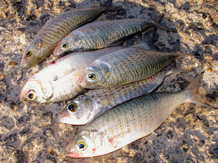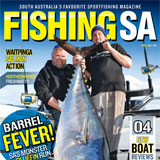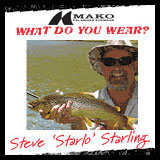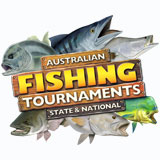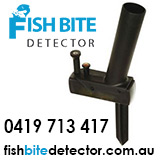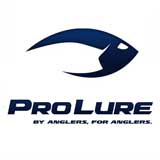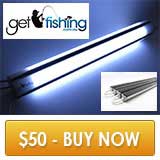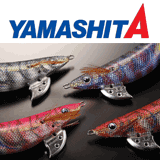Species ID
View AllAustralian Herring
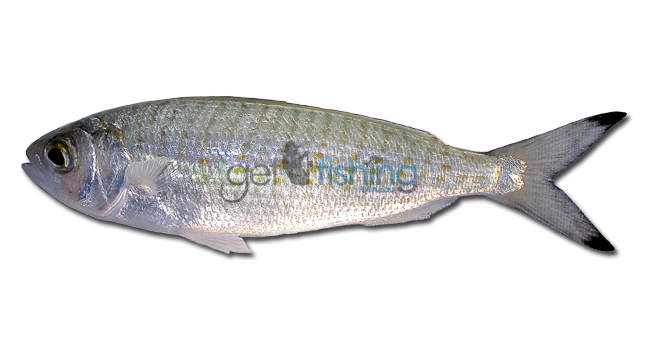
Australian herring are often confused with juvenile Australian salmon, which are of the same genus. They are differentiated by their relatively larger yellow and black eye and a more rounded head than Australian salmon. Australian herring are silver in colour with rough-textured scales, black tips on tail and golden spots along the upper body. They are a schooling fish and are a food source to many predators such as yellowtail kingfish, mackerel, mulloway, Australian salmon, seals, sea lions and sea birds. Herring are popular to recreational anglers and are commercially targeted and sold as fresh fish in seafood markets, as bait to rock lobster fishermen and as pet food.
Other names
Bull Herring, Tommy Rough, Tommy Ruff, Herring, Roughy, Ruff, Tommy, Western Herring, Sea Herring
Common size
25-30cm
Related species
Australian salmon
Lifespan
Up to 10 years, potentially up to 14 years
Habitat
Herring school in large numbers in areas such as sea-grass meadows, beaches, reefs, coastal bays and estuaries. They generally inhabit the top few meters from the surface.
Reproduction
Matures at approximately 20cm and 2-3 years of age. They spawn around the lower west coast of Australia in May to June each year. Currents then sweep larvae and juveniles as far east as Victoria.
Diet
Herring are a predatory fish that feed on small fish such as anchovies and sardines, as well as small weed-dwelling crustaceans and insects.
Catch care
Dispatch your fish humanely and immediately after capture. Bleed your herring and keep out of sunlight in a bucket of cool water, in a wet hessian bag (or similar), ice esky or an ice slurry for up to a few hours and refrigerates as soon as practicably possible.
Filleting
See our ‘Fillet Australian Herring‘ video.
Information courtesy of Department of Fisheries WA
Australian herring are endemic to Australia and are abundant in coastal waterways throughout the southern half of Australia from Shark Bay in Western Australia to Port Phillip Bay in Victoria. They prefer inshore coastal waters and estuaries as well as offshore islands. The distribution of herring is highly influenced by the Leeuwin Current, which flows southward along the WA coast. When the current is strong adult fish don’t travel as far up the west coast to spawn, however their larvae will disperse further east along the south Australian coastline.
3 stars. Australian herring are a staple to many WA, SA and VIC anglers. A good feed can be made from a handful of herring and their oily flesh is strong and fishy.
Herring make tasty fish cakes and are fantastic smoked. Herring taste great simply pan fried with a light dusting of flour and a sprinkle of pepper and salt. They do not freeze well and are best eaten fresh.
